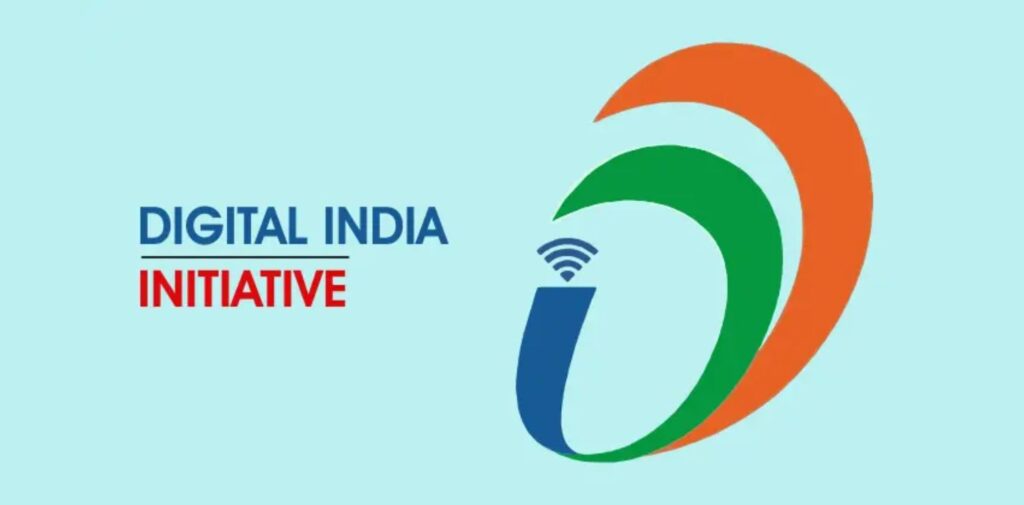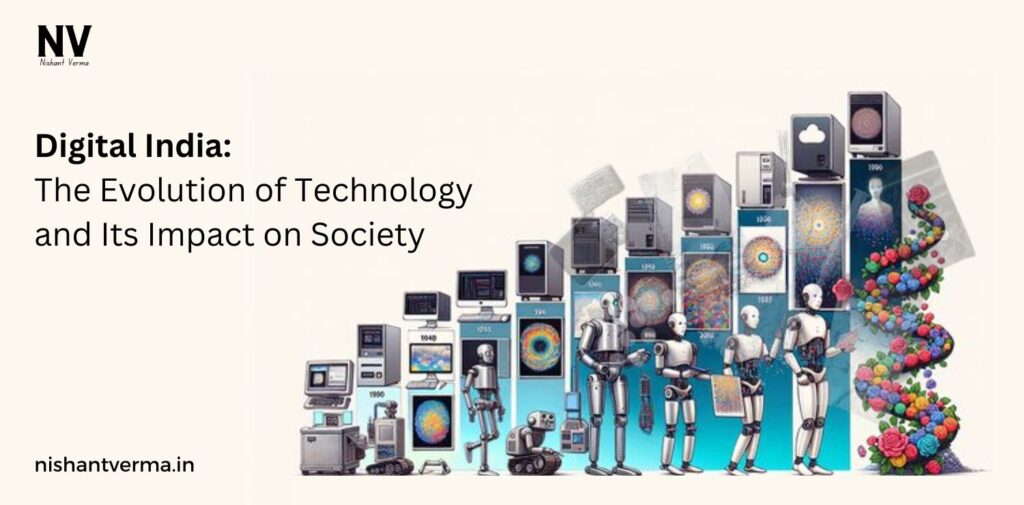In recent years, the concept of “Digital India” has become a pivotal part of India’s development narrative. Launched in 2015, this initiative aims to transform India into a digitally empowered society and knowledge economy. As technology evolves, it has profoundly influenced various aspects of life, from education and healthcare to governance and business. This article explores the evolution of technology in India under the Digital India initiative and its significant impact on society.

The Genesis of Digital India
The Digital India initiative was launched by the Indian government with the vision of empowering citizens through digital infrastructure. The program focuses on three key areas: digital infrastructure as a utility for every citizen, governance and services on demand, and digital empowerment of citizens. By bridging the digital divide between urban and rural areas, the government aims to ensure that everyone has access to information and services.
Building Digital Infrastructure
One of the primary objectives of Digital India is to create robust digital infrastructure. This includes expanding internet connectivity across the nation, especially in rural and remote areas. As reported, community internet awareness programs have played a crucial role in enhancing digital literacy, enabling people to access essential services and information online. This connectivity not only reduces reliance on intermediaries but also empowers individuals to make informed decisions.
Internet Connectivity
High-speed internet is the backbone of the Digital India initiative. The government has focused on enhancing internet access through initiatives like BharatNet, which aims to connect over 250,000 gram panchayats (village councils) with optical fiber cables. This project has made significant progress, allowing millions of rural residents to access online resources, government services, and educational content.
Digital Services and E-Governance
With improved connectivity, the government has introduced various digital services. The Digital India initiative promotes e-governance, where citizens can access government services online without the need to visit offices physically. Services like online tax filing, digital ration cards, and land record management have simplified bureaucratic processes and reduced corruption. This shift not only saves time but also enhances transparency and accountability.

Empowering Citizens Through Technology
Education
One of the most significant impacts of Digital India is seen in the education sector. With the proliferation of online learning platforms, students from all backgrounds can access quality educational resources. Platforms like SWAYAM offer free online courses on diverse subjects, making education more inclusive.
Moreover, the introduction of digital classrooms and smart boards in schools enhances the learning experience. Teachers can utilize multimedia content to engage students better, making lessons more interactive and enjoyable. This digital shift is particularly beneficial for rural students who previously had limited access to quality education.
Healthcare
Technology has also transformed the healthcare landscape in India. Telemedicine services allow patients in remote areas to consult doctors without traveling long distances. Initiatives like Ayushman Bharat leverage digital tools to provide health insurance to the underprivileged, ensuring access to quality healthcare. Furthermore, mobile applications enable patients to book appointments, access medical records, and receive reminders for medication, improving overall health management.
Financial Inclusion
Digital India has played a crucial role in promoting financial inclusion. The Pradhan Mantri Jan Dhan Yojana (PMJDY) aimed at providing bank accounts to the unbanked population has seen immense success. With the introduction of digital wallets and mobile banking, individuals can now perform transactions, save money, and access credit without visiting a bank. This shift empowers citizens, especially in rural areas, by facilitating easier access to financial services.

The Role of Technology in Employment
- Job Creation: The Digital India initiative has opened up new avenues for employment. The growing tech industry has created millions of jobs in areas like software development, cybersecurity, and digital marketing. As businesses increasingly shift online, there is a rising demand for skilled professionals who can navigate the digital landscape. Moreover, digital entrepreneurship has gained momentum. Startups leveraging technology are emerging across sectors, contributing to job creation and economic growth. By 2025, it is projected that Digital India could generate over 1 million jobs, not only for young graduates but also for mid-career professionals seeking new opportunities.
- Skill Development: To harness the potential of the digital economy, skill development is crucial. Various government initiatives, such as the Skill India Mission, aim to equip individuals with the necessary skills for the digital age. These programs focus on training youth in emerging technologies like artificial intelligence, data analytics, and blockchain. By enhancing the skill set of the workforce, India can remain competitive in the global market.
- Challenges Ahead: Despite the progress made under the Digital India initiative, several challenges remain. The digital divide still exists, with a significant portion of the population lacking access to reliable internet connectivity. Rural areas, in particular, face hurdles in terms of infrastructure and digital literacy. Addressing these gaps is essential for ensuring that the benefits of digitalization reach everyone.
- Cybersecurity: As more services move online, cybersecurity becomes a critical concern. Protecting sensitive data from cyber threats is vital to maintaining public trust in digital services. The government must invest in robust cybersecurity measures and educate citizens about safe online practices to mitigate risks.
- Digital Literacy: While access to technology has improved, digital literacy remains a challenge for many. Older generations and those in rural areas may struggle to navigate online platforms. Initiatives aimed at enhancing digital literacy are essential to empower citizens to utilize digital services effectively.
Conclusion: Digital India Initiative
The Digital India initiative has ushered in a new era of technology and connectivity, transforming the landscape of Indian society. From enhancing education and healthcare to promoting financial inclusion and job creation, technology has become an integral part of daily life. While challenges remain, the journey towards a digitally empowered society is underway. By continuing to invest in infrastructure, skills, and awareness, India can realize the full potential of Digital India, ensuring that technology serves as a catalyst for inclusive growth and development. As the nation progresses, the dream of a digitally connected India becomes increasingly attainable, paving the way for a brighter future for all its citizens.




